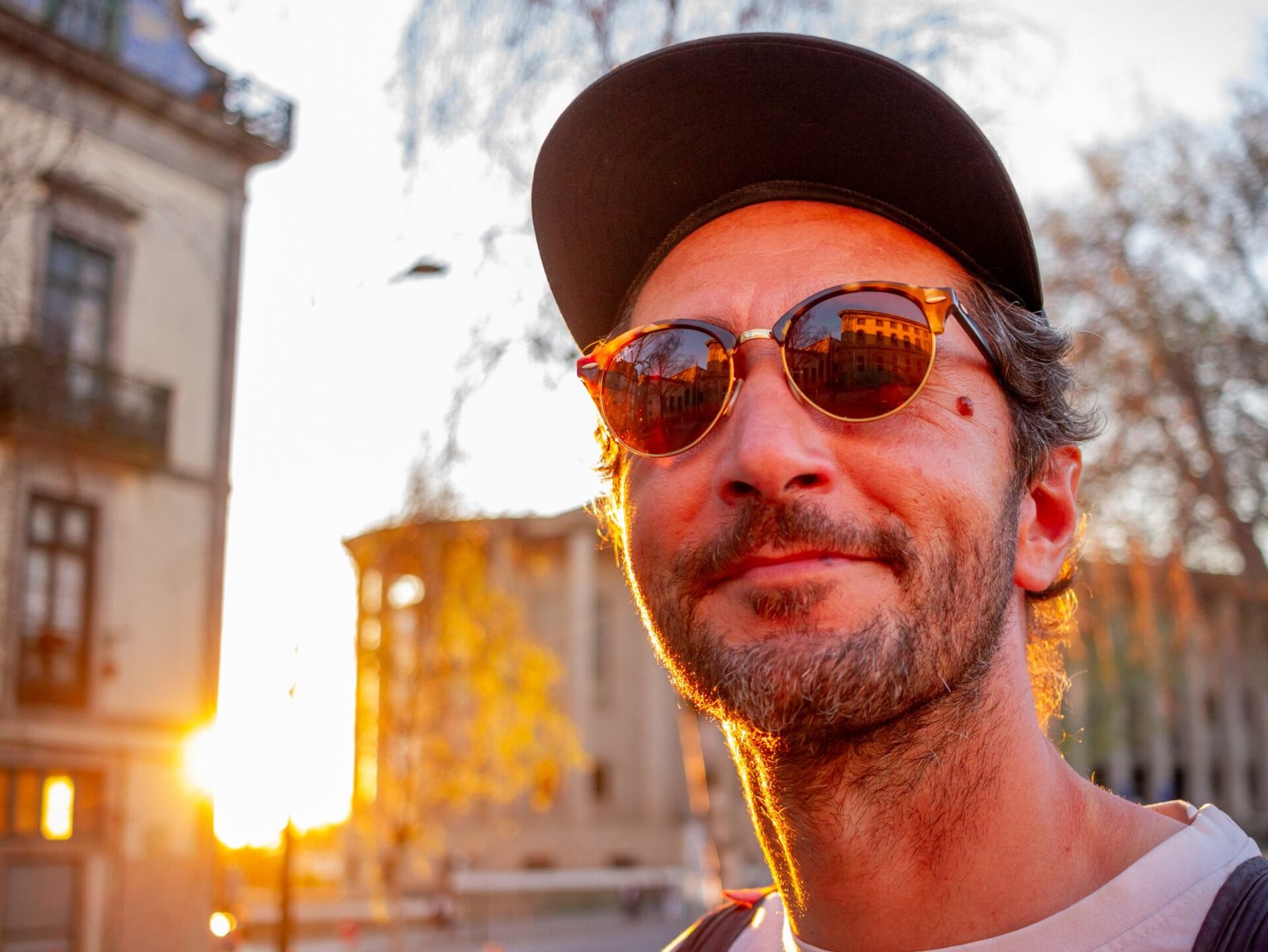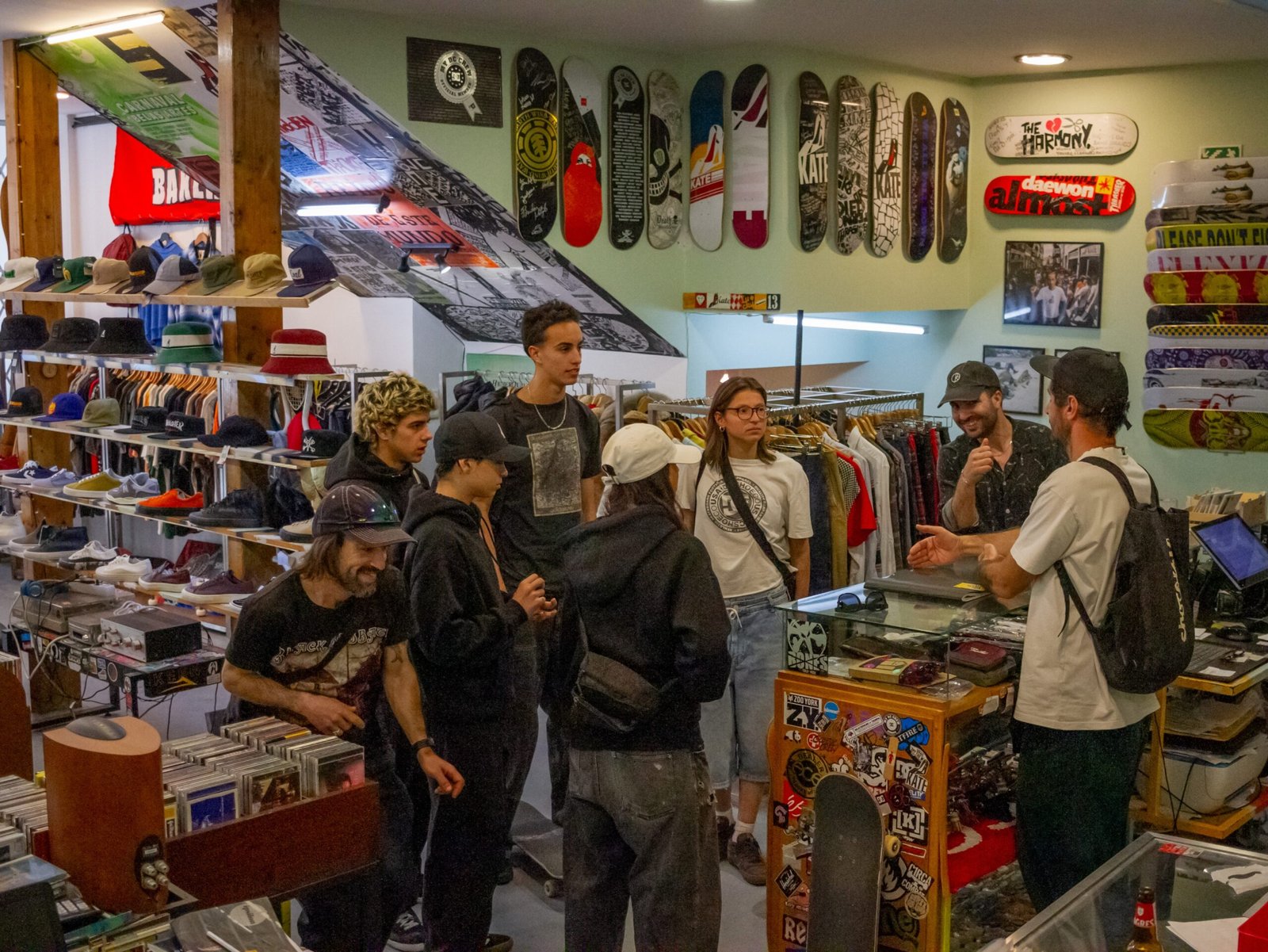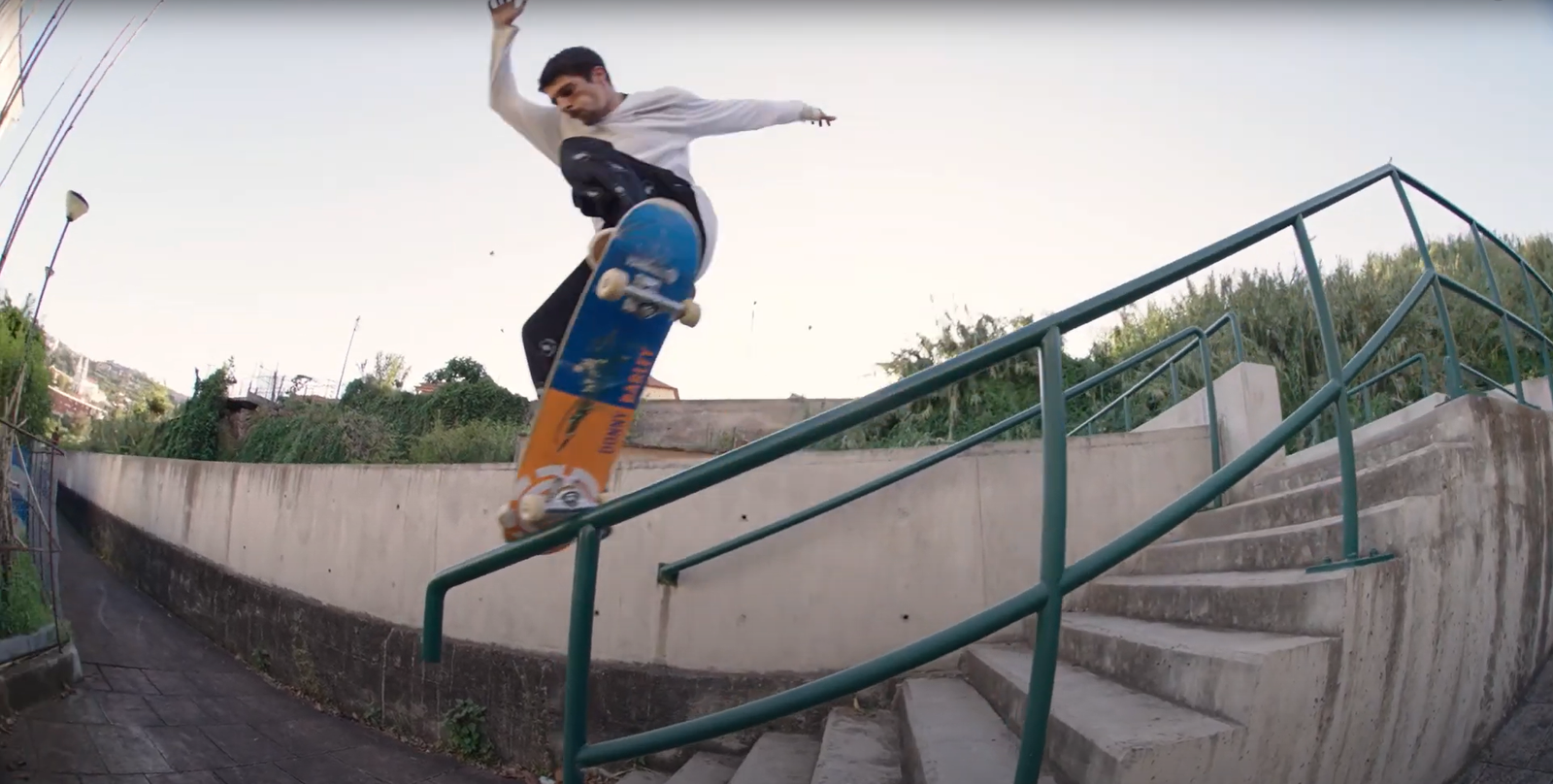Skateshops Are Still Importantor Has the Internet Already Buried Them?
At your Local Skateshop Needs You
Remember the feeling of walking into a skate shop. The smell of wood, the stickers all over the counter, the skate videos playing on a small TV, and the local skater behind the counter ready to tell you that the board you chose is “too soft” or that those trucks won’t last long. A skate shop isn’t just where you buy gear, it’s the hub of everything. It’s where you stay up to date with the latest news, where you schedule sessions, and where the events that keep the scene alive happen.
Now, open your phone. In less than two minutes, you can order a deck, trucks and bearings directly from the brand, without leaving your home and, probably, for less money than at your local store. What used to be a mission is now a one-click task on Amazon or some website full of absurd discounts. And so, many physical stores are starting to disappear.
But is the internet killing skateshops once and for all? Yes and no. Yes, because it makes it impossible to compete with the prices and ease of online shopping. Brands realize that they can sell directly to consumers and cut out the middleman. Many skaters, especially younger ones, grow up without the habit of going to a store and end up seeing skateboards as just another product you can buy on eBay or some other website.
At the same time, there’s something the internet will never be able to replicate: culture. A good skate shop isn’t just a place where you sell boards, it’s a meeting point, a space where you build your identity. It’s where you watch videos before anyone else, where you meet other skaters, where you discover local brands and where someone tells you how to tune your trucks for that perfect sound.
What we see today is that the skate shops that are still standing are the ones that understand this. The ones that are just stores disappear. But the ones that create a strong scene around them continue to live on. The secret is not to try to compete with the internet, it is to offer something that the internet will never be able to provide. And many are finding ways to stay relevant: launching their own brands, organizing events, producing content and connecting directly with the community.
So, are skate shops still important? Yes. But they can’t survive on just selling boards and wheels anymore. The future of brick-and-mortar stores depends on whether they can balance online sales with creating an authentic culture. Because at the end of the day, skateboarding isn’t just about what you buy, it’s about where and who you ride with.
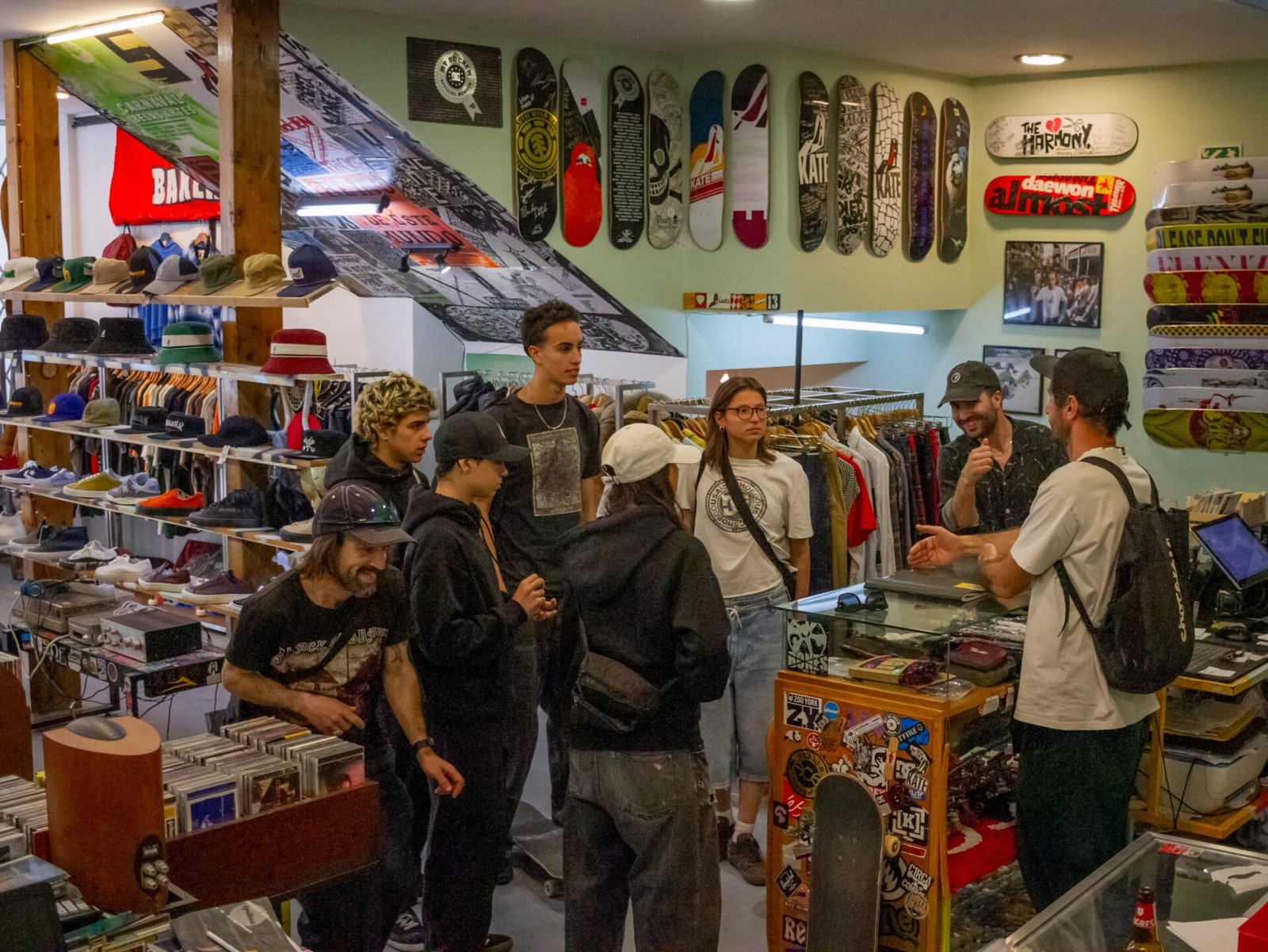
We spoke with Nuno Gaia, skateboarder and owner of Kate Skateshop, a true reference when it comes to keeping a skateshop alive amidst so many difficulties. If anyone knows what it means to fight for local skateboarding, it’s him. Follow his example, support your skate shops and ensure that the scene remains strong. Because without skateshops, skateboarding loses an essential part of its culture.

Nowadays, people buy almost everything online. Why should a skateboarder choose to buy from a store like Kate instead of ordering from a chain and saving a few bucks?
For several reasons, we are 100% skateshop, when I say that I mean that the owner is a skater, he goes out with people skating, I organize events, and we are specialized, we do not sell other products from other types of sports.
More and more brands are selling direct and there are huge online stores offering incredible discounts. How can a small skate shop survive in the midst of all this?
The worldwide problem at the moment is because of this, we have to adapt and work with those who help us and not with those who only think about their own well-being!
You’ve seen brands grow with the help of skateshops and then turn around and start selling direct. How do you react when that happens?
The skate shop serves to create hype at the beginning, after that is done it is time to put it everywhere because we are not the ones who give them what they are looking for, large monetary values… they give us crumbs, the big ones do good business that allows them to earn even more money.
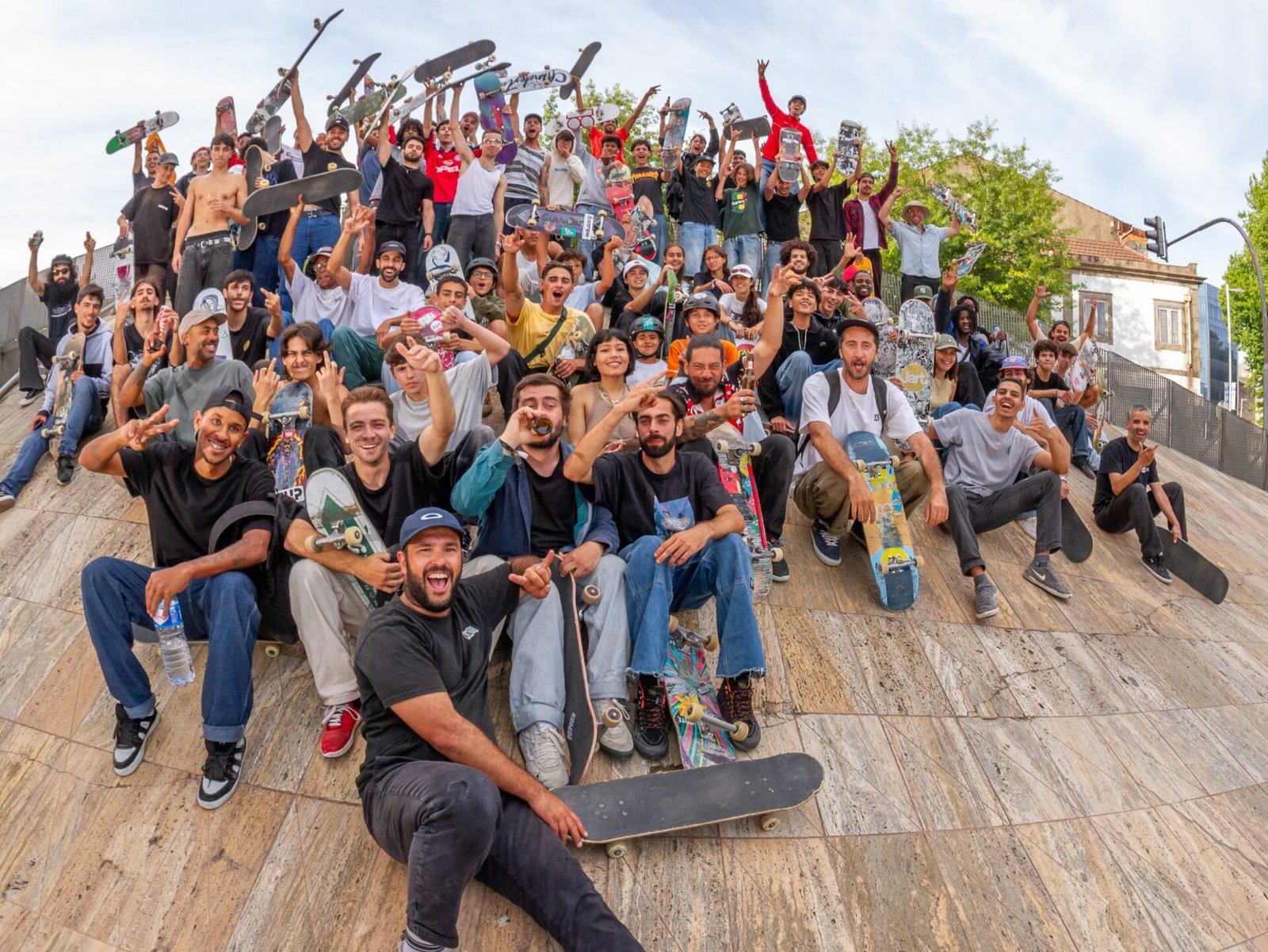
A few years ago, and it still is, but few skate shops were almost like a second home. Do you still see that happening or do people now only come when they need new grip tape or not even that?
People come when they need sandpaper or a used board or a bearing… it’s a classic! Of course we still have some loyal customers, but many prefer to go online, but then to organize events or to get things done they come knocking on our door. This concept of going to the store and spending a little time there looking at a magazine or chatting a bit is getting lost…
What does a skate shop have that the internet will never be able to replace?
Personalized service, on the internet you don’t know or even see the shape of the board, there is no one to advise you on making the best choice. Many kids buy based on the brand without even knowing that they can buy brands that are not so mainstream and of equal or very similar quality and save a few bucks too!
Imagine a kid just starting out. Does he still need a skate shop to become part of the scene or does it all happen on Instagram?
Yes, it does, but sometimes it depends on who is behind the counter! In my case, I like to encourage them to go out and skate, to not be ashamed to ask other skaters for help if they need it, I like to give them tips on how to get started and not be in a hurry to learn quickly because everyone has their own learning process! And Instagram doesn’t have any of that, Instagram just takes away your time from skateboarding!
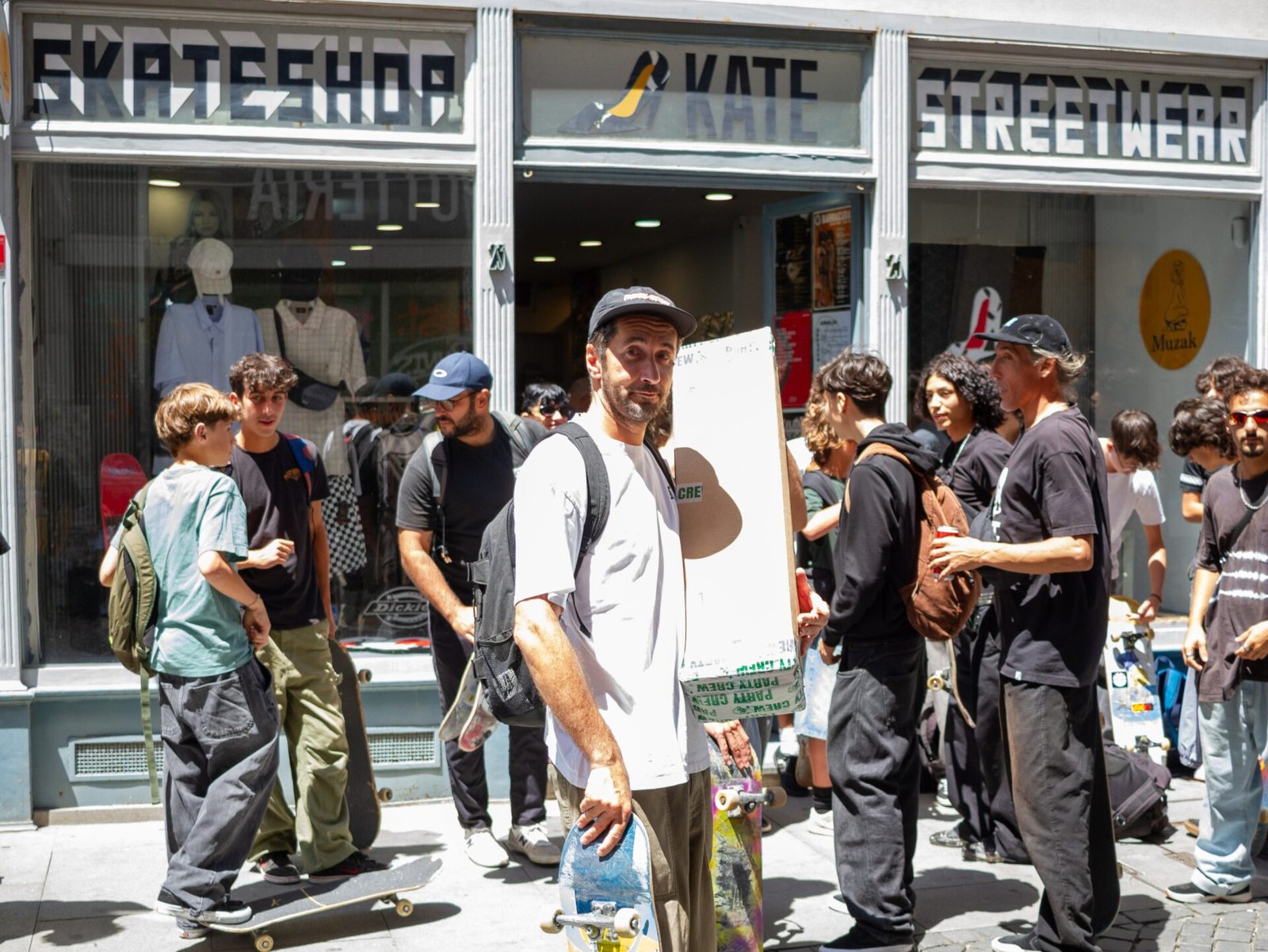
Kate has been through a lot, but when did you start to feel like things were really getting tough?
When it starts to get difficult to pay bills and have to take on extra work!
When you launched the GoFundMe to save Kate, was it more out of desperation or do you still believe there is room for stores like yours?
It’s not desperation, it’s an attempt to keep this going, a wake-up call to skaters, help the skate shops or they’ll go out of business… one by one… and recently there were two… POP in Estoril and Skills in Braga… and maybe many more are like me. This is an attempt and a bet that will be to try to have more products with those who help us and with national and local brands, big brands that do nothing for the community, no thanks.
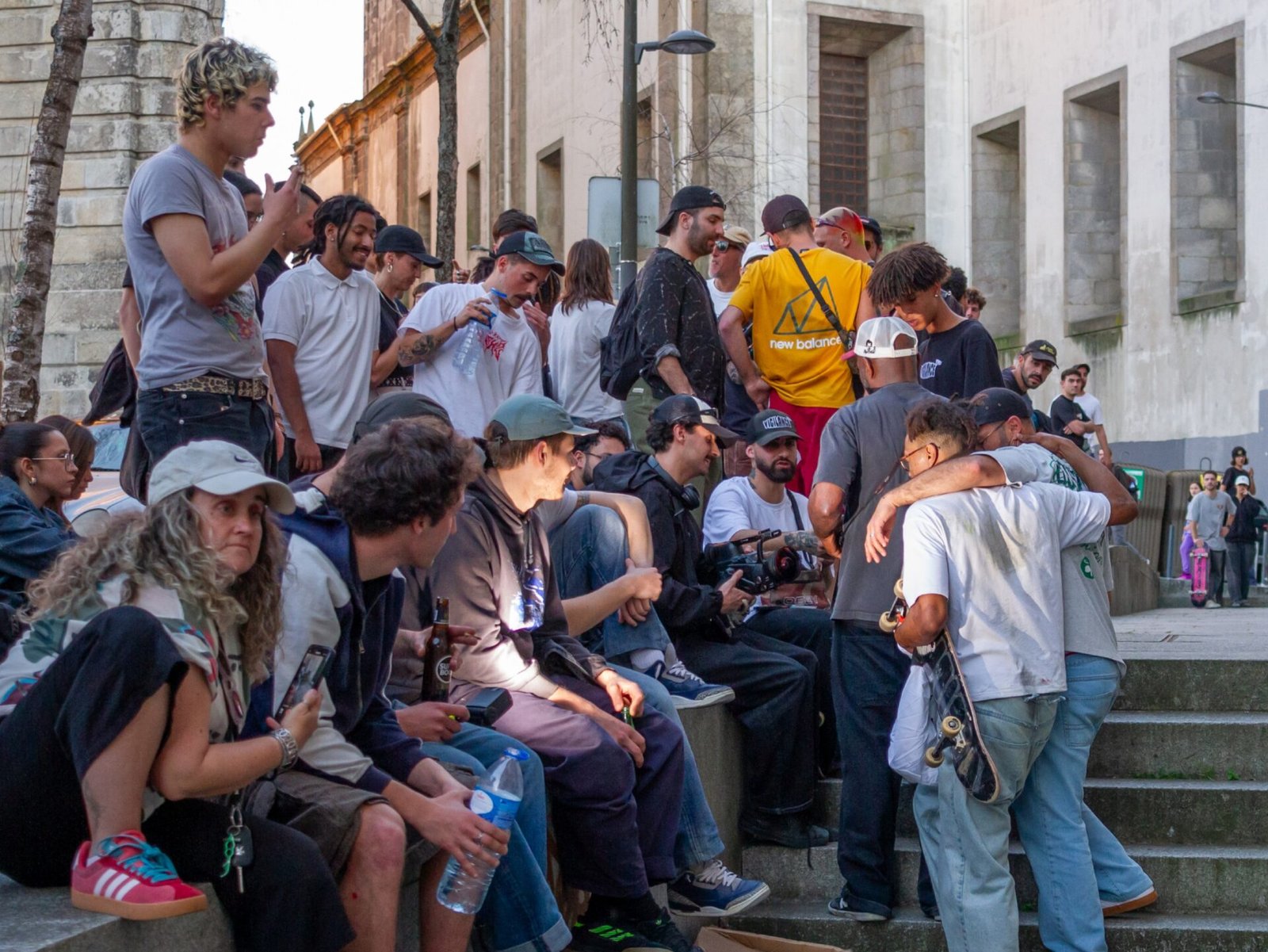
You said that one of your plans is to invest more in merch. Do you think that a skateshop nowadays has to be almost its own brand to survive?
As a friend (Chris Nierekto) told me a few weeks ago, who has a lot of experience in skateboarding and who has two stores in New Jersey (NJ Skateshop), 60% of the material inside a skateshop has to be store merchandise, that’s where you have the biggest margin and it’s really what people outside will look for, because there are other brands everywhere!
If a skateshop wants to remain relevant today, what does it have to do differently compared to 10 or 15 years ago?
You have to be able to adapt to the new times and you have to do things and not let yourself be stuck in time!

If you could go back in time, is there anything you would do differently to avoid getting to this point?
Partnerships with those who want to help and invest more in Kate’s merch. Kate’s merch has never been out of stock, sales are guaranteed!
If Kate closed tomorrow, what do you think the real impact would be on skateboarding in Porto?
I don’t think I would even like it…maybe many would be sad, but many could also have helped to prevent this from happening!
Besides buying boards, what can people do to help skateshops not disappear?
Buy clothes or merchandise from local skateshops! You don’t make money with boards…hehehe, you only have boards because you’re a skateshop…if you put the price as it is out there maybe you would make money, but with online shops offering mega discounts you can’t…
If a kid told you he wanted to open a skateshop right now, would you say “go for it” or would you call him crazy and tell him to invest somewhere else?
You only know if you can do it if you try. He might have a formula that works! You have a 50% chance that it will go well and a 50% chance that it will go badly… You try, and if it doesn’t work, at least you tried. You weren’t a failure, you did it, but it didn’t work, but at least you tried! And that’s the spirit of a skateboarder: to try… If you don’t try, you don’t know if you can do it or not, and if you fall, you get up and try again…
